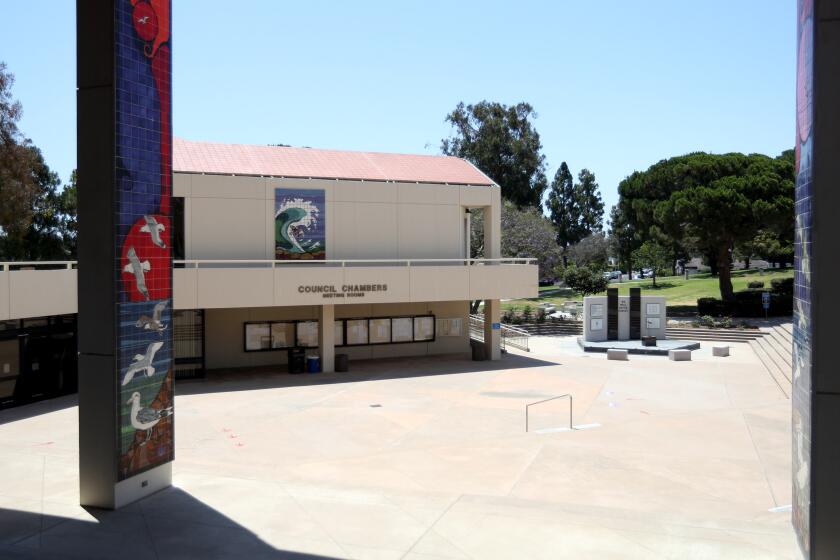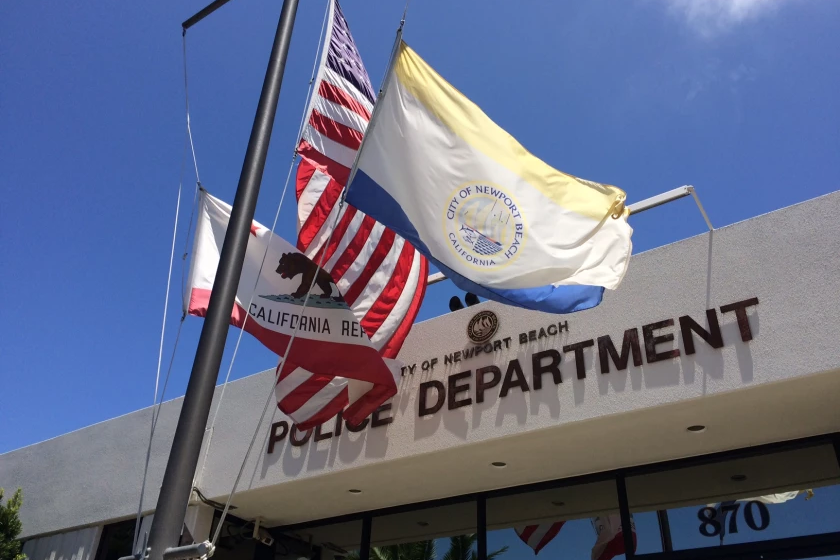Easy way to avoid those lobster pots
- Share via
Ahoy.
Once again, it’s lobster season and scores of floating buoys are
tethered to the lobster pots lining up seaward from both of Newport’s
jetties tips.
Boaters should travel this area with caution and watch out for the
lobster pot buoys just seaward of Newport’s line of demarcation. You
want to avoid entangling the buoys’ lines around your keel, running
gear or wrapping the lines in your props. You can clear the buoys by
maintaining a straight course between the jetty entrance and the
midchannel marker.
Let me explain the line of demarcation and the proper approach and
departure from Newport Harbor. Most people are familiar with the
floating bell buoy in the ocean where sea lions haul out just outside
the jetties. This buoy was once labeled as Buoy No. 1 and painted
green (originally painted black) as prescribed by the lateral system
of buoyage for all odd-numbered can buoys. A few years ago, to aid
vessels with the harbor approach, the bell buoy was changed to a
midchannel buoy and, as such, painted red and white -- vertically
striped with a white light flashing Morse code alfa (* --). Thus, a
boater is to pass close on either side of this buoy when entering or
exiting the harbor entrance.
The inland-international line of demarcation is an imaginary line
drawn between both channel markers located on the tips of the West
and East jetties. Green marker No. 3 is positioned on the West Jetty
with a green flashing light and the East Jetty has red marker No. 4
with a red flashing light.
The proper outbound vessel course is to traverse the channel
between the rock jetties with the vessel, keeping its starboard side
nearest the West Jetty, and once you pass marker No. 3 to continue
seaward, passing the mid-channel marker off your portside before
changing course. Just as when you are approaching the entrance, you
should line up passing the midchannel marker to your port side and
marker No. 4 off your starboard side.
By following this prescribed approach, you should miss the lobster
pots, but remember the pots will drift from time to time.
If you are inside the line of demarcation, then the inland
navigation rules apply and there is a 5 mph speed limit. A few
definitions comprise the harbor’s speed limit with the foremost rules
being that vessels are not to exceed 5 mph (4.35 knots) or not to
create a wake. The main purpose is to keep vessels from creating a
wake that will damage dock structures and cause erosion and to
maintain a safe navigation speed.
One exception in is steerage, and vessels are allowed to exceed
the 5 mph speed restriction for safety. I have two examples to help
understand steerage, and the first example would be trying to
navigate during a storm. If the storm winds are blowing 50 knots in
addition to a strong current, then your vessel might be overpowered
by the present conditions. In this scenario, the skipper may increase
speed to maintain course to keep the vessel off the beach.
The second example is, most of you probably remember the Back Bay
dredging and the large tug pushing the loaded barge through the
harbor. The tug operator increased speed many times to counteract the
effects from the tidal currents and wind in the harbor so that he
could maintain steering control in the confined channels.
The steerage rule is not a free pass to speed in the harbor, and a
prudent skipper will seek the nearest safe refuge when the conditions
are unsafe.
* * *
Question of the week: How is a boater supposed to pass Newport’s
channel marker No. 8 when inbound? This is the marker directly out
from the harbormaster’s office, between the two mooring areas, where
the channel narrows like an hour glass.
I keep receiving reader requests for my cruising stories and next
week I will have a few. On my schedule, I am conducting a training
session for a new yacht owner in San Diego and delivering two yachts
to Ensenada, Mexico, from Newport Beach and Marina Del Rey.
Safe voyages.
* MIKE WHITEHEAD is the Pilot’s boating and harbor columnist.
Send him your harbor and marine-related thoughts and story
suggestions via e-mail to Mike@BoathouseTV.com or BoathouseTV.com.
All the latest on Orange County from Orange County.
Get our free TimesOC newsletter.
You may occasionally receive promotional content from the Daily Pilot.







